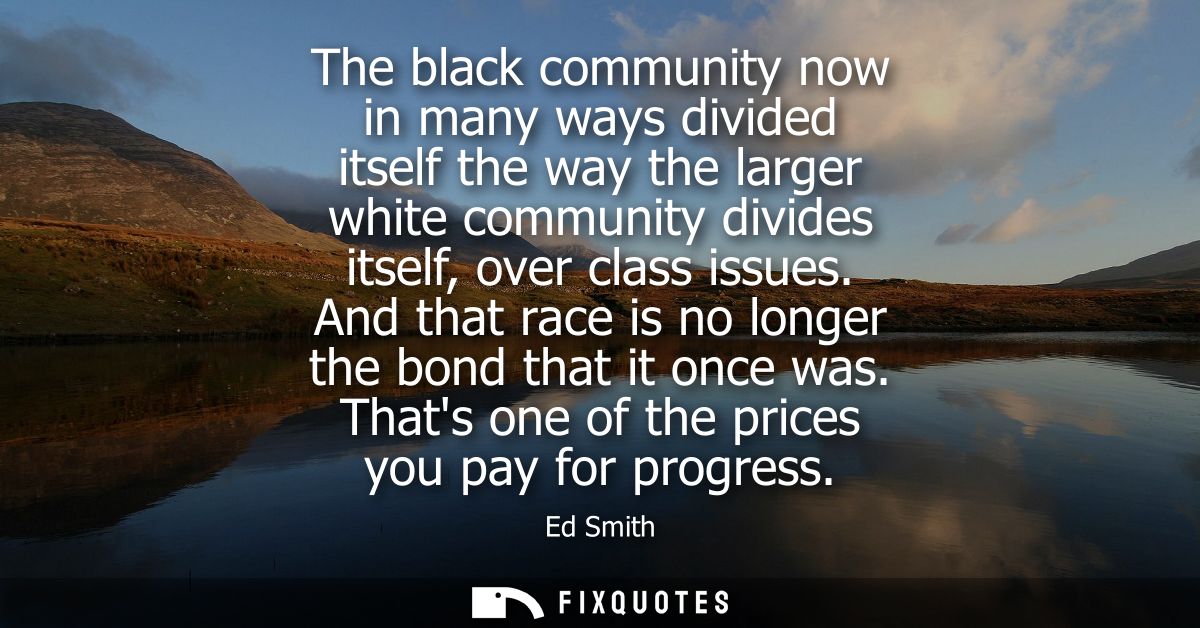"The black community now in many ways divided itself the way the larger white community divides itself, over class issues. And that race is no longer the bond that it once was. That's one of the prices you pay for progress"
About this Quote
Ed Smith draws attention to a profound transformation within the black community: as social and economic progress has taken hold, a new kind of internal division has emerged, patterned after the divisions long recognized in mainstream white society, those based not on race, but on class. Where once racial identity provided a powerful, even necessary, unifying force, helping black Americans to confront the shared burdens of discrimination and exclusion, the rapid changes brought on by increased educational attainment, economic mobility, and broader opportunities have fostered a more stratified social landscape. The shared project of survival and civil rights fostered solidarity out of necessity, but as obstacles were removed for some, the group’s cohesion, once maintained by the ever-present reality of racism, has softened.
Smith’s words highlight that “race is no longer the bond that it once was”, a subtle but far-reaching shift. In past generations, black communities often found unity in opposition to the world’s inequities; stress and marginalization created strong ties of mutual support and camaraderie. But within contexts where black lawyers, doctors, and entrepreneurs find themselves leading lifestyles divergent from their working-class or impoverished counterparts, new measures of status and success take hold. Aspirations begin to diversify, and old networks may fray as privilege and disadvantage are distributed in new patterns.
This evolution carries a bittersweet note. Smith identifies it as “one of the prices you pay for progress”, the painful paradox that as freedom expands and individual opportunities grow, communal solidarity may diminish. Progress lifts some but can also reposition others, seeding new divisions that complicate the old unity forged in struggle. The community's internal stratification mirrors the broader society, challenging the idea of a singular black experience and revealing how class, much like race, can shape identity, relationships, and the very nature of collective action.
More details
About the Author
